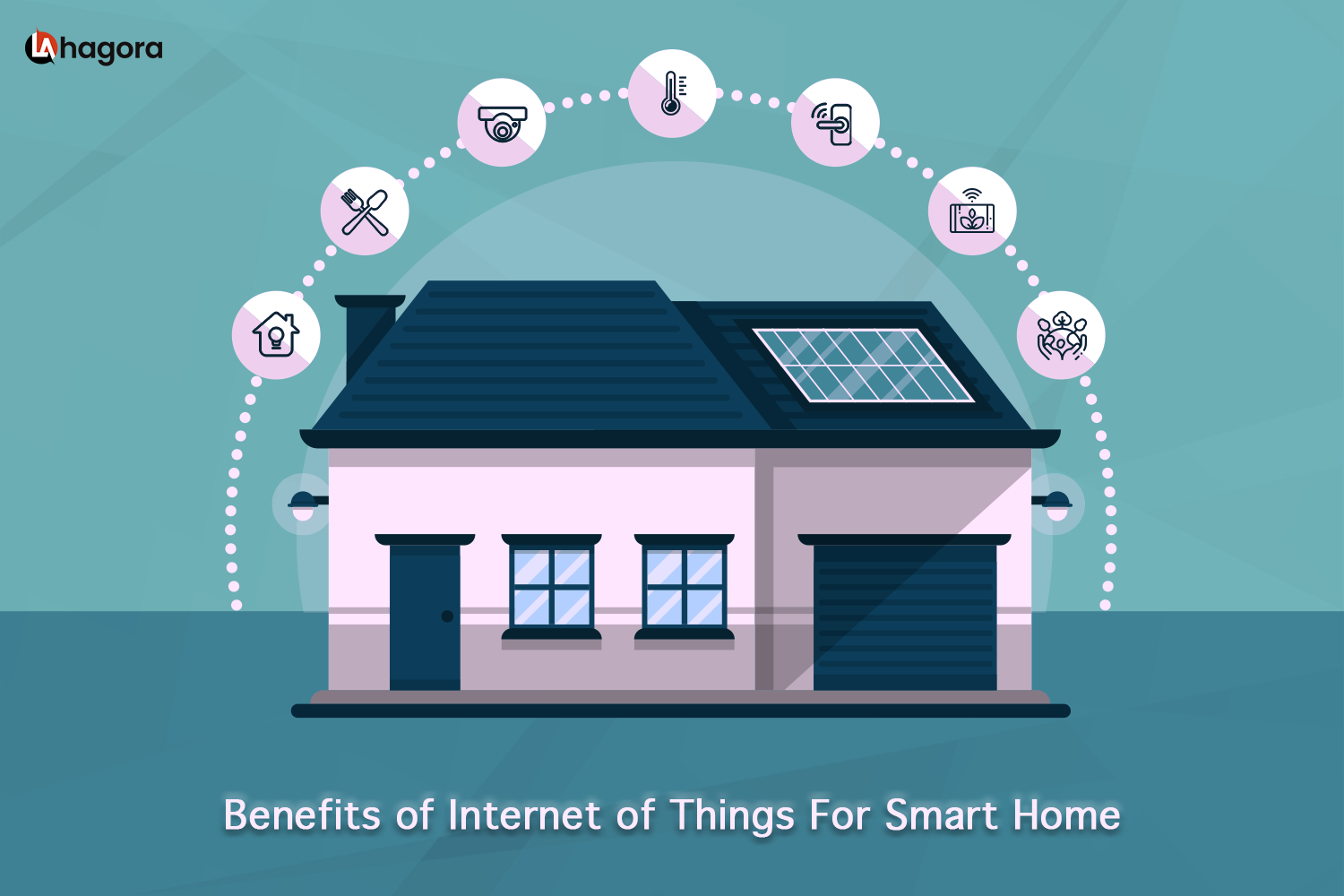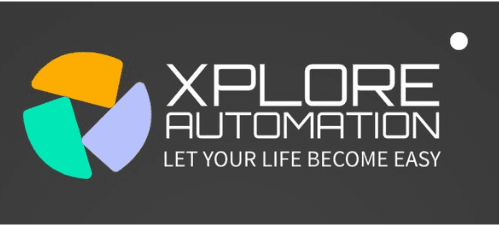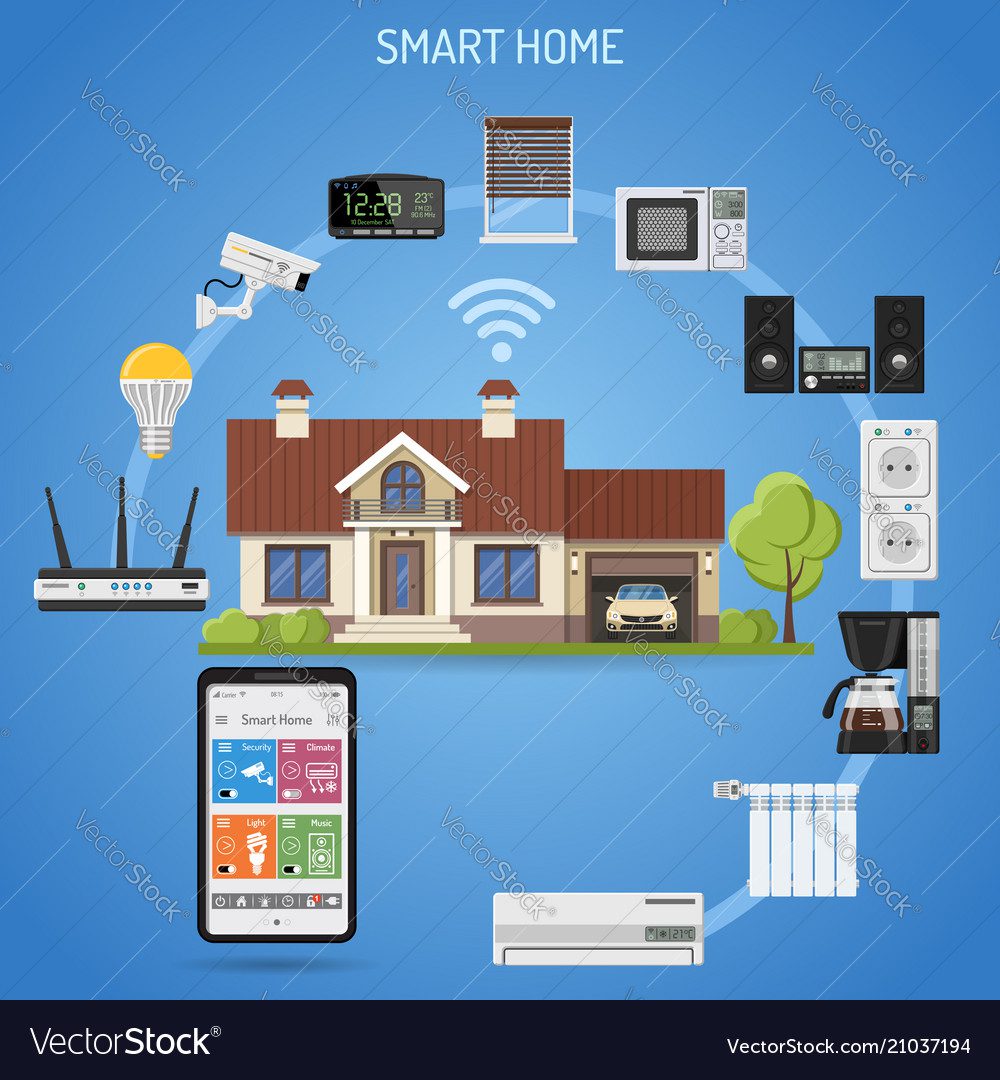Smart Home and Internet of Things (IoT) refers to the integration of everyday objects with internet connectivity, enabling remote access, automation, and control. The concept is revolutionizing the way we interact with our homes, making them more efficient, convenient, and secure.
With IoT, users can control various aspects of their homes, such as lighting, heating, security systems, and entertainment devices, through their smartphones or voice commands. This technology has the potential to enhance our daily lives by providing greater convenience, energy savings, and improved safety.
Additionally, the IoT ecosystem continues to expand, with more devices and applications being developed to make our lives even smarter and interconnected.
The Basics Of Smart Home Technology
Smart home technology, a key aspect of the Internet of Things, revolutionizes the way we interact with our homes. With devices connected to the internet, homeowners can control and automate various tasks, enhancing convenience, energy efficiency, and security. Discover the basics of this innovative technology.
What is a smart home?
A smart home refers to a residence equipped with smart devices and appliances that are connected to a central network. These devices can be remotely monitored and controlled using a smartphone or other network-connected devices. The main concept behind a smart home is to enhance the comfort, security, and energy efficiency of the living space. Smart homes utilize Internet of Things (IoT) technology to automate and optimize various aspects of the household.
How does smart home technology work?
Smart home technology operates through a network of interconnected devices that communicate with each other and the user. These devices, such as thermostats, lighting, security cameras, and appliances, are equipped with sensors and are connected to the home’s Wi-Fi network.
Users can control these devices individually or create automated routines and schedules. This connectivity allows for seamless integration and customization, providing users with a personalized and efficient living environment.
In a typical smart home setup, devices are connected to a central hub or smart speaker that serves as the control center. Users can give voice commands or use smartphone apps to monitor and manage the connected devices. The data collected from these devices can provide insights into energy usage, security, and overall home maintenance, enabling users to make informed decisions and adjustments.
When considering the utilization of smart home technology, it’s important to assess individual needs and preferences to determine the most suitable devices and automation features. By integrating smart home technology, individuals can streamline daily tasks, improve energy efficiency, and enhance the overall functionality and security of their living space.

Credit: www.vectorstock.com
Features And Benefits Of Smart Home
The Features and Benefits of Smart Home technology have revolutionized the way we live, offering a seamless integration of different devices and appliances within our homes. This interconnectedness enables homeowners to optimize their living environment, providing increased convenience, security, energy efficiency, and an overall improved quality of life.
Automation And Convenience
The automation capabilities of a Smart Home allow users to control various appliances and devices remotely. With a simple tap of a button on a smartphone or voice command, you can adjust the temperature, turn on lights, close curtains, or even start your coffee maker, all from the comfort of your bed or while away from home.
Enhanced Security
Smart Home technology offers advanced security features that ensure the safety of your property and loved ones. From smart locks and doorbells with built-in cameras to motion sensors and surveillance systems, you can monitor your home in real time and receive instant notifications if any unusual activity is detected.
Energy Efficiency
One of the key benefits of a Smart Home is its ability to optimize energy consumption, reducing utility bills and environmental impact. Smart thermostats can learn your routines and adjust the temperature accordingly, saving energy when you’re away and maintaining a comfortable environment when you’re home. When a room is empty, smart lighting systems can turn off the lights automatically. Similarly, smart appliances can run during off-peak hours to save money on energy.
Improved Quality Of Life
A Smart Home can greatly enhance your overall quality of life by simplifying daily tasks and providing effortless control over your environment. Voice assistants, such as Amazon Alexa or Google Assistant, enable you to effortlessly manage multiple functions, such as playing music, setting reminders, and answering questions without lifting a finger. Furthermore, integrated home entertainment systems can create immersive experiences, turning your living room into a home theater with just a few taps.
Popular Smart Home Devices And Systems
Smart homes and Internet of Things (IoT) devices have taken the world by storm, revolutionizing the way we live and interact with our homes. These devices and systems not only offer convenience and efficiency but also provide a seamless connected experience. In this article, we will explore some popular smart home devices and systems that are enhancing our daily lives.
Smart Speakers And Voice Assistants
Smart speakers, such as Amazon Echo and Google Home, have become a staple in many households. These devices are equipped with built-in voice assistants, like Amazon’s Alexa or Google Assistant, that listen to your commands and respond to your queries. From playing music to setting reminders, controlling other smart devices, or even ordering groceries, smart speakers have become a hub for managing your smart home ecosystem.
Smart Thermostats
Smart thermostats, like Nest or Ecobee, allow you to control the temperature of your home from anywhere using a smartphone app. These devices learn your preferences and adjust the temperature automatically to ensure optimal comfort and energy efficiency. You can set schedules, monitor your energy usage, and even receive reports on how to save more on your energy bills, making your home both eco-friendly and cost-effective.
Smart Lighting
Smart lighting systems, such as Philips Hue or LIFX, enable you to control your lights remotely and personalize your home’s ambiance. With these systems, you can create different lighting scenes, change colors, or dim lights according to your mood or the time of day. Some smart lighting options even sync with your favorite movies, music, or games to enhance your entertainment experience, adding a touch of magic to your living space.
Home Security Systems
Home security is a top priority for many homeowners, and smart home security systems offer advanced features and peace of mind. These systems, including Ring and Arlo, allow you to monitor your home from your smartphone, receive real-time alerts, and even interact with visitors remotely through video doorbells. With motion sensors, smart locks, and security cameras, you can keep your home secure and have complete control over your property, even when you’re away.

Credit: lahagora.com
Challenges And Concerns In Smart Home Technology
The growing popularity of smart home technology has undoubtedly revolutionized the way we interact with our living spaces. However, along with the convenience and innovation, certain challenges and concerns need to be addressed to ensure a seamless and secure user experience. Here are some of the key areas that raise apprehensions within the domain of smart home technology.
Privacy And Data Security
The privacy and data security of smart home devices and systems is a critical concern. Personal information and user data are potentially susceptible to breaches, and the lack of robust security measures can expose individuals to privacy risks. Addressing these issues is crucial to promote trust and confidence in smart home technology.
Compatibility Issues
Compatibility issues arise when integrating different smart devices and platforms within a home environment. Incompatibility can lead to connectivity and operational challenges, hindering the seamless functioning of the smart home system. The lack of unified standards contributes to this dilemma.
Reliability And Dependency
Reliability and dependency on internet connectivity and power supply present concerns regarding the seamless operation of smart home devices. Reliable functioning is crucial for security, convenience, and overall user satisfaction. Potential downtimes can cause inconvenience and compromise safety and functionality.
Cost
Balancing the costs associated with acquiring and maintaining smart home technology is a significant concern for many consumers. The initial investment and ongoing expenses need to be justified by benefits and long-term value. Ensuring affordability without compromising on quality and functionality is a crucial consideration for broader adoption.
The Future Of Smart Home And Internet Of Things
In today’s fast-paced, tech-savvy world, the concept of a smart home is becoming increasingly prevalent. As the Internet of Things (IoT) continues to advance, our homes are transforming into interconnected ecosystems that bring unparalleled convenience, efficiency, and intelligence to our everyday lives. Let’s explore the future of smart homes and IoT, focusing on key areas such as the integration of IoT devices, advancements in artificial intelligence, and the emergence of smart cities and interconnected ecosystems.
Integration Of IoT Devices
One of the most exciting aspects of the future of smart homes is the integration of IoT devices. These devices, such as smart thermostats, smart locks, and smart appliances, can communicate with each other and are all connected to the internet. This interconnectedness enables seamless automation and control, allowing homeowners to manage various aspects of their homes remotely.
Imagine waking up in the morning to a warm and well-lit home, thanks to your smart thermostat and smart lighting system. With just a few taps on your smartphone or voice commands to your virtual assistant, you can adjust the temperature, turn on the lights, and even start brewing your favorite coffee.
Advancements In Artificial Intelligence
Artificial intelligence (AI) plays a crucial role in the future of smart homes. AI-powered virtual assistants like Amazon Alexa and Google Assistant are already common household names, but the future holds even more exciting possibilities.
With advancements in AI, virtual assistants will become even smarter, understanding our preferences and habits in a more personalized way. They will be capable of analyzing data from various IoT devices to anticipate our needs, making intelligent suggestions, and automating routine tasks. From creating personalized lighting and temperature settings to ordering groceries based on our consumption patterns, AI will revolutionize our daily lives.
Smart Cities And Interconnected Ecosystems
As technology progresses, our homes are not the only entities becoming smarter. The concept of smart cities is on the rise, where interconnected ecosystems connect homes, businesses, transportation systems, and more.
Smart cities prioritize sustainability, energy efficiency, and improved quality of life for citizens. Street lights equipped with sensors that detect movement and adjust brightness accordingly, or waste management systems that optimize garbage collection routes based on real-time data are just a few examples of how interconnected ecosystems can enhance urban living.
In a smart city, data from various devices and systems are collected, analyzed, and used to optimize resources and provide services more efficiently. For example, smart traffic systems can dynamically adjust traffic lights based on real-time traffic conditions, reducing congestion and improving overall efficiency.
Interconnected ecosystems, enabled by IoT and AI, have the potential to transform our cities into intelligently managed spaces, enhancing sustainability, safety, and the overall quality of life for residents.

Credit: www.vectorstock.com
Frequently Asked Questions On Smart Home And Internet Of Things
What Is A Smart Home And IoT?
A smart home is a residence equipped with devices connected to the internet for remote monitoring and control. IoT (Internet of Things) refers to the interconnected network of devices, sensors, and software. These technologies allow for automation, energy efficiency, and improved security in homes.
Why Is The Internet Of Things Important In The Smart Home?
The Internet of Things (IoT) is vital in smart homes as it connects devices, enabling remote control and automation. This facilitates convenience, energy efficiency, and improved safety. IoT allows seamless integration and communication between various devices, optimizing the overall functionality of a smart home.
Which IoT application in a smart home is an example of this?
One example of an IoT application in the smart home is a smart thermostat that can be controlled remotely via a smartphone. (20 words)
What Is The Difference Between Internet Of Things And Smart Devices?
The Internet of Things (IoT) is a network of connected devices, while smart devices are individual gadgets with advanced features. IoT involves multiple devices communicating and sharing data, while smart devices are standalone, intelligent products. Both aim to improve efficiency and convenience through technology.
Conclusion
Transforming your house into a smart home with Internet of Things technology offers convenience and security. Embracing these innovations can elevate your lifestyle and streamline daily tasks. With the potential for energy savings and enhanced connectivity, smart homes are undoubtedly the future.
Stay informed, stay connected, and welcome the future home.

I am a technology writer and blogger with 17 years of experience in the fields of information technology, artificial intelligence, cyber security, automated systems, and the latest technology trends.

